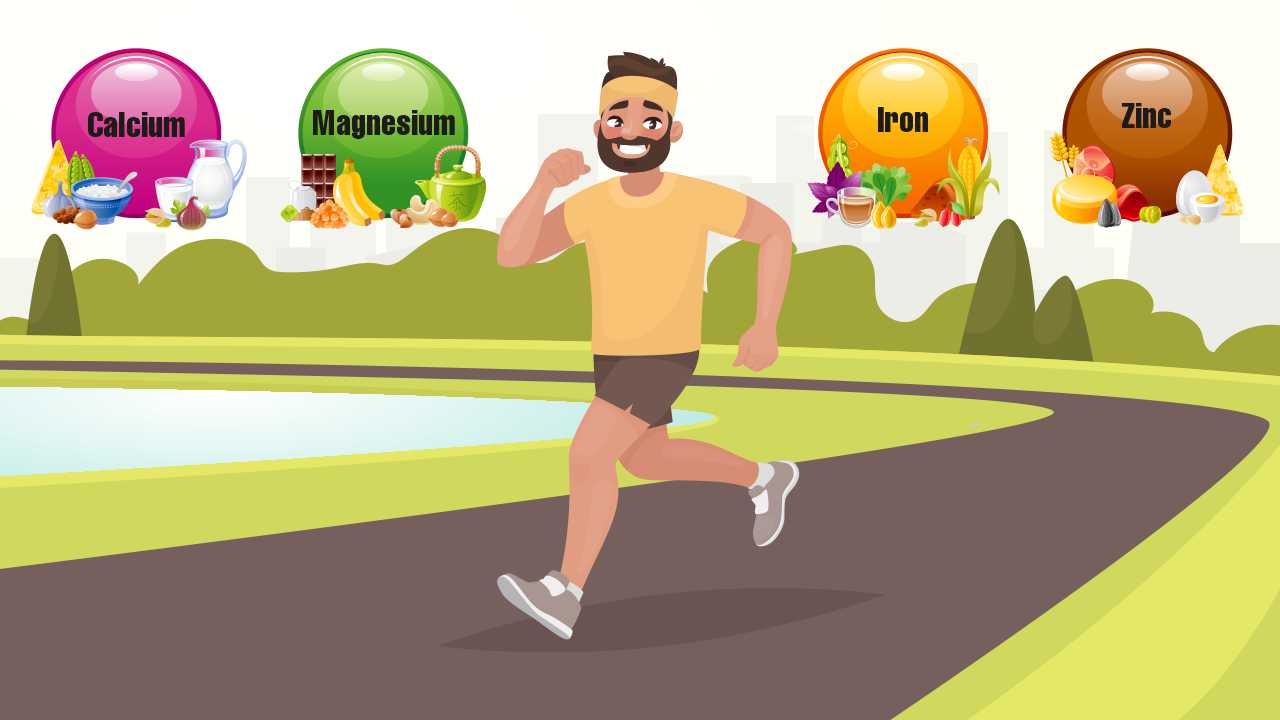
How Should Female Runners Meet Their Fueling Needs?

Nutrition can play an important role in improving an athlete’s performance, speed, recovery, and adaptations to training, as well lowering the risk of injury. Their nutritional needs include increased caloric requirements, greater amounts of protein and carbohydrate, and higher consumption of some vitamins and minerals.
Energy requirements and fuel utilization
Nutritional needs for women are more complex compared to that of men due to the fluctuations in hormone levels throughout the menstrual cycle and lifecycle, and this is further complicated for women who participate in endurance sports like running.
Women athletes may have different energy and macronutrient (protein, carbohydrate, and fat) needs due to the role of female sex steroid hormones influencing the metabolism of carbohydrate and fat during exercise. In general, adenosine triphosphate (ATP) production (the production of energy) during exercise is dependent on micronutrient availability, storage, and exercise intensity.
Also read: How to Fuel If You Are Running in the Heat?
Women rely more on fat and less on carbohydrate at the same relative exercise intensity compared to men. This means that there is a difference in terms of the types and amounts of fuels utilized by male and female athletes.
Nutrition principles for female athletes
This is a complex topic that often demands the advice of a physician or registered dietitian. But an understanding of a few sound nutrition principles will serve female athletes well.
The types of nutrients required for physically active women are the same as they are for other populations. What changes is the amount of some specific nutrients required in the diet. In general, female athletes will need more energy in the form of calories, water, sodium, potassium, and certain vitamins like thiamin, riboflavin, and niacin than non-athletic females. Fortunately, this does not require a special diet, as the requirements for sodium, potassium, and vitamins are usually easily met when adhering to a balanced eating plan that provides adequate calories.
That said, female athletes should be mindful of two key nutrients — water and iron. When it comes to water, all runners, male and female alike, should understand the importance of fluid balance and how to properly rehydrate during and after exercise. Although female athletes do not require higher levels of iron, the consumption of this mineral is limited in their diet, and so it should be a particular focus among female athletes.
For all athletes, inadequate total caloric intake increases the risk of fatigue, injury, illness, and poor performance along with many health-related considerations, including cardiovascular health and immune function. Female athletes, particularly younger women, also need energy to maintain reproductive and menstrual functions. Generally speaking, active women should consume at least 1,800 calories per day, though this value varies widely depending on the amount of training and competition an athlete is completing. Women exercising between six and 10 hours per week should consume around 2,500 calories per day, while those exercising for 10 to 20 hours per week may need more than 3,000 calories daily.
While no two athletes are the same, there are some common recommendations for female runners. However, because things like menstrual cycle length and cycle phase length can create the need for more specific guidance, it is important to consult with a dietitian if nutritional needs are not being adequately met.
Here are the specific recommendations for female runners:
| Daily requirements for female runners | Notes | |
| Energy intake | >45 calories/kg of fat-free mass, plus calories used during physical activity | This requires knowledge of body composition and the number of calories burned during training runs. |
| Protein | 1.2g-1.6g/ kg | |
| Carbohydrate loading | >8g /kg | |
| Iron | 18mg | May be lower (11 to 12mg/ day) for oral contraceptive users |
| Calcium | 1,000mg | Amenorrheic athletes may require an additional 500mg/ day |
| Vitamin D | 300IU-2,000 IU | The amount needed in the diet is inversely related to sun exposure |
| Water | 2L plus water lost during exercise | Combined water consumption from food and beverages |
Also read: How to Calculate Macros for the Perfect Fitness Goal
The nutritional needs of women depend on substrate utilization, thermoregulation, fatigue, soreness, recovery, and body composition. In addition, these requirements vary throughout the lifespan, more so for women than men. As in all things related to fitness, nutrition, health, and athletic performance, there is no one-size-fits-all approach, which is why personalization of your training and nutrition is vital to your success.
References
1. Boisseau N, Isacco L. Substrate metabolism during exercise: sexual dimorphism and women’s specificities. Eur J Sport Sci 2021; 1.
2. Deldicque L, Francaux M. Recommendations for Healthy Nutrition in Female Endurance Runners: An Update. Front Nutr 2015; 2:17.
3. Hackney AC. Menstrual Cycle Hormonal Changes and Energy Substrate Metabolism in exercising women: A Perspective. Int J Environ Res Public Health 2021; 18:10024.
4. Manore MM. The Female Athlete: Energy and Nutrition Issues. 2021. https://www.gssiweb.org/sports-science-exchange/article/the-female-athlete-energy-and-nutrition-issues (accessed Oct 22, 2021).
5. Muth ND. Sports Nutrition for Health Professionals. Philadelphia: FA Davis, 2015.
6. Rodriguez NR, Di Marco NM, Langley S. American College of Sports Medicine position stand: Nutrition and athletic performance. Med Sci Sports Exerc 2009;41: 709–31.
7. Steinbaugh M. Nutrition needs of female athletes. Clin Sports Med 1984; 3: 649–70.
8. Wohlgemuth KJ, Arieta LR, Brewer GJ, et al. Sex differences and considerations for female specific nutritional strategies: a narrative review. J Int Soc Sports Nutr 2021; 18: 27.













